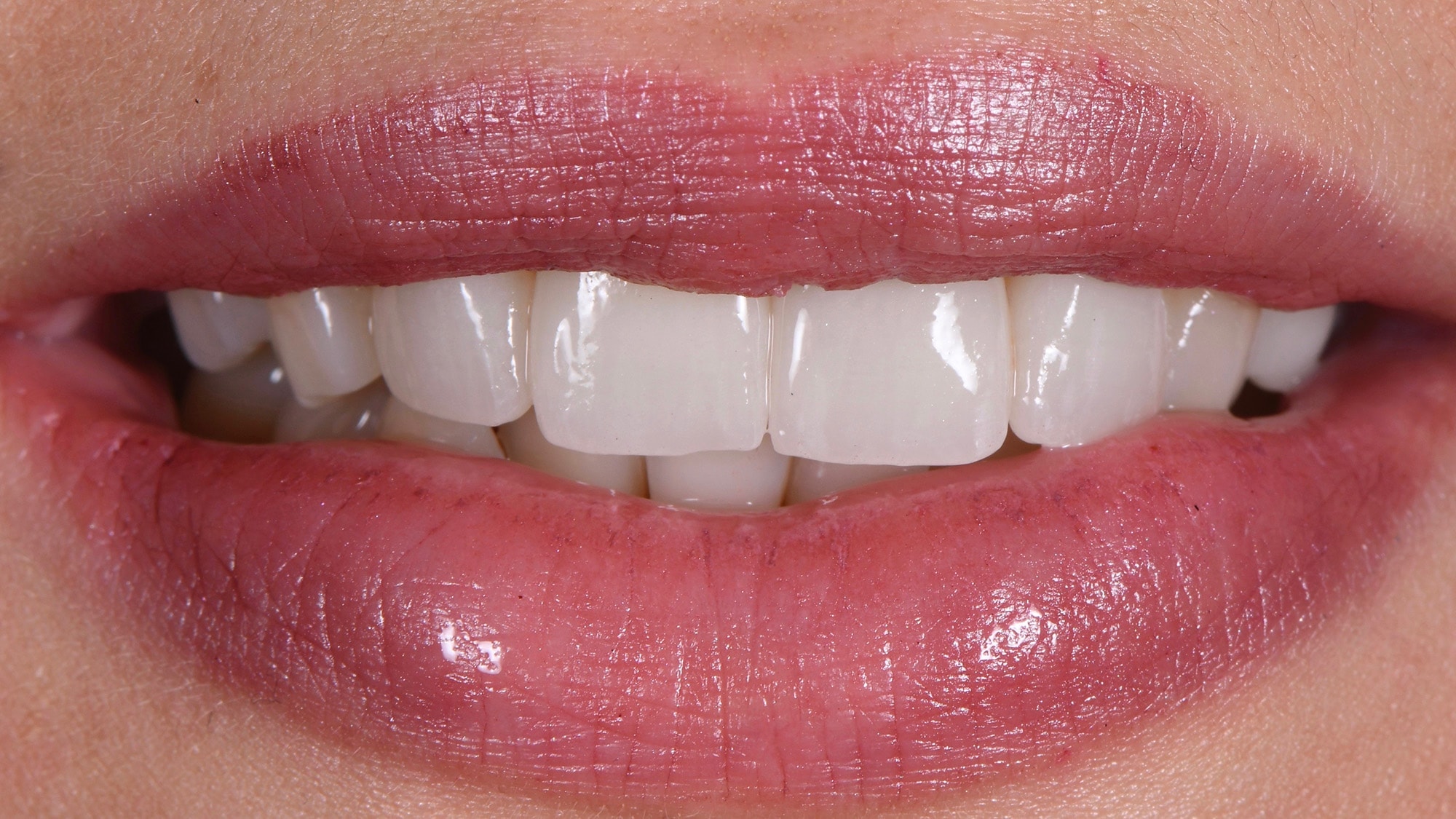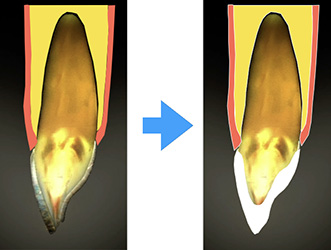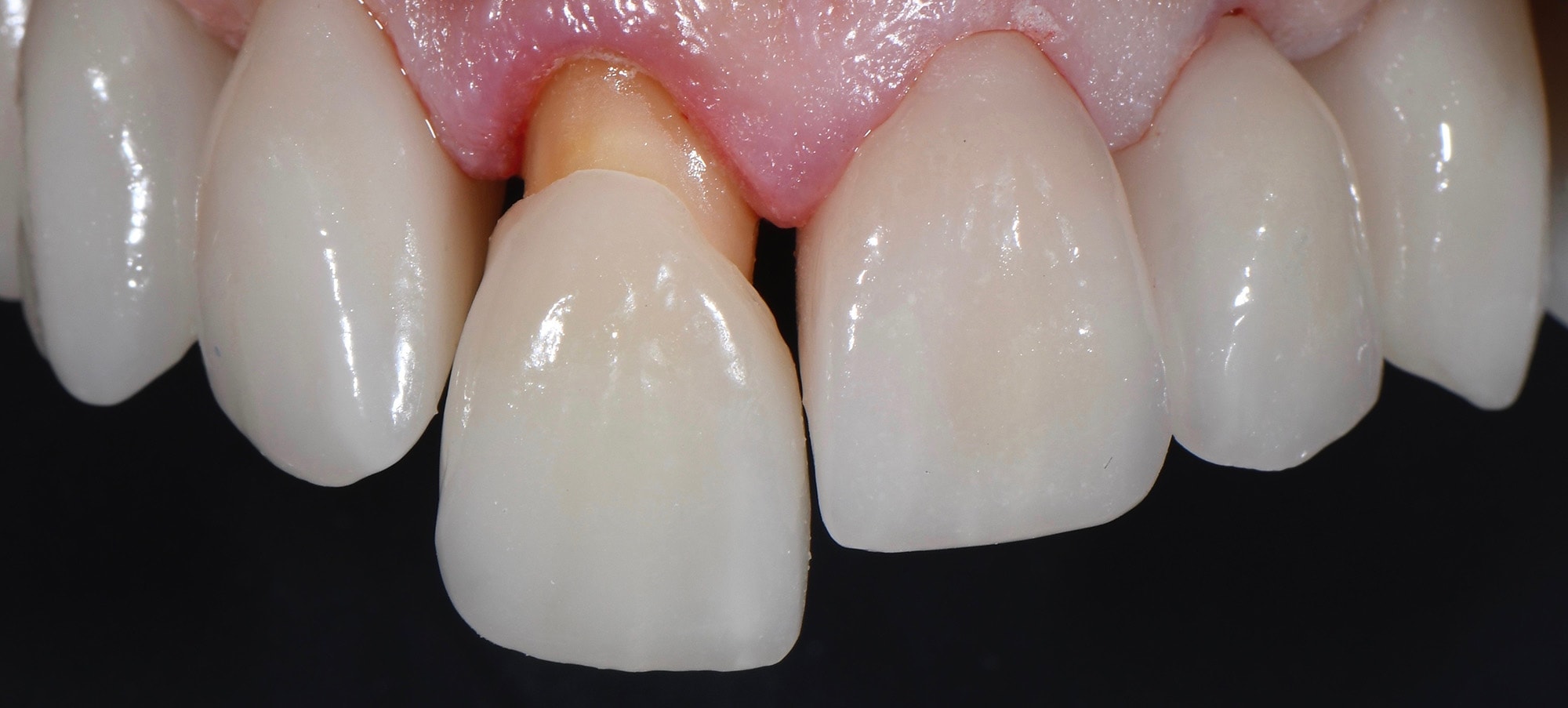

Ceramic crowns completely cover the tooth. As such, it necessary to remove about 1mm of enamel on all contours of the tooth, and the crown then inserts like a cap. Zirconia ceramics is generally used for the bottom teeth because of their solidity, and glass-ceramics and feldspars ceramics for the front teeth. These ceramic restorations can be attached to natural roots or dental implants.

Ceramic crowns are indicated to strengthen fragile teeth but also to improve the smile. They are modeled and then machined by CAD / CAM, or can be “laminated” by hand by the prosthetist in a “traditional” way.

